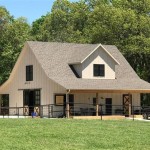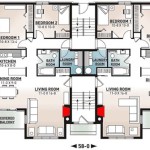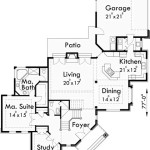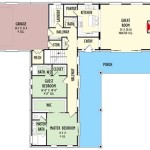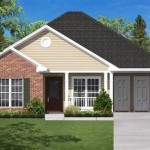Floor Plans With Secret Passageways: A Historical and Modern Perspective
The allure of secret passageways has captivated imaginations for centuries. From ancient castles concealing escape routes to modern homes incorporating hidden rooms for various purposes, the concept of a secret passageway remains a compelling architectural feature. Floor plans designed with secret passageways require meticulous planning and a thorough understanding of structural integrity, accessibility, and security. This article explores the history, design considerations, and modern applications of floor plans that incorporate these hidden avenues.
The historical context of secret passageways is rich and varied. In medieval castles, they served as escape routes during sieges or as discreet ways for royalty to move unseen throughout the fortress. These passages were often crudely constructed, utilizing existing architectural features like thick walls and stairwells. The primary function was security and the ability to evade enemies. Over time, the design and purpose evolved. During the Prohibition era in the United States, secret rooms and passageways became popular additions to homes and businesses, used for concealing illegal activities like alcohol production and distribution. These spaces were often more elaborate, incorporating hidden entrances disguised as shelves, cabinets, or even fireplaces. The romanticized image of hidden passages in historical fiction further fuels the fascination with these secret architectural elements, cementing their place in popular culture.
Modern floor plans with secret passageways take on a variety of forms, dictated by the homeowner's needs and desires. While the historical motivations of security and secrecy may still be present, modern applications often prioritize entertainment, novelty, and the creation of unique spaces within a home. These passages can lead to home theaters, wine cellars, panic rooms, or even children's play areas. The design and integration of these passages require careful consideration of building codes, structural limitations, and the overall aesthetic of the home. Unlike the often-crude construction of historical passages, modern versions emphasize seamless integration and discreet concealment.
Key Considerations in Designing Floor Plans with Secret Passageways
Designing floor plans that incorporate secret passageways is a complex undertaking that requires the expertise of architects, structural engineers, and contractors. The success of the design hinges on several key considerations that must be addressed from the initial planning stages.
Firstly, the structural integrity of the building is paramount. Creating a passageway necessitates altering the existing structure, which can potentially compromise its stability. Load-bearing walls cannot be simply removed or altered without proper reinforcement and support. Consulting with a structural engineer is crucial to ensure that the modifications meet building codes and do not weaken the building's framework. The engineer will assess the existing structure, analyze the proposed changes, and recommend appropriate reinforcement measures, such as adding support beams or columns. This is particularly important in older buildings where the original construction may not meet current safety standards.
Secondly, accessibility and ease of use are important factors. A secret passageway should be easily accessible to those who are intended to use it, without being obvious or cumbersome. The mechanism for opening the passage should be discreet and reliable. Common disguises include bookshelves that swing open, cabinets with hidden latches, or even sections of wall that slide away. The mechanism should be designed to be both functional and aesthetically pleasing, blending seamlessly with the surrounding décor. Furthermore, the passageway itself should be comfortable to navigate, with adequate lighting and ventilation. This is especially important if the passageway is intended for frequent use.
Thirdly, security and concealment are fundamental aspects of a secret passageway. The entrance should be virtually undetectable to anyone who is not aware of its existence. This requires careful attention to detail in the design and construction. The entrance should blend seamlessly with the surrounding wall or furniture, with no visible gaps or seams. The locking mechanism should be secure and difficult to bypass. In some cases, biometric scanners or other advanced security measures may be incorporated to restrict access to authorized individuals only. The goal is to create a passageway that is both functional and secure, providing a hidden avenue for passage while maintaining the privacy and security of the home.
Materials and Methods for Creating Secret Passageways
The choice of materials and construction methods plays a significant role in the success of a secret passageway. The materials must be durable, aesthetically pleasing, and seamlessly integrated with the existing structure. The construction methods must be precise and ensure that the passageway is both functional and structurally sound.
For the entrance mechanism, wood is a common choice due to its versatility and ease of manipulation. A bookshelf that swings open, for example, can be constructed from solid wood or engineered wood products. The hinges should be heavy-duty and concealed to prevent them from being visible. The locking mechanism can be a simple latch or a more sophisticated electronic system. The key is to ensure that the mechanism is reliable and easy to operate, while also being discreet and secure.
The walls of the passageway can be constructed from drywall, wood paneling, or even concrete. The choice of material will depend on the overall aesthetic of the home and the desired level of security. Drywall is a cost-effective option that can be easily painted or wallpapered to match the surrounding décor. Wood paneling adds a touch of elegance and can be used to conceal wiring or plumbing. Concrete provides the highest level of security and can be used in panic rooms or other areas where security is paramount.
The flooring of the passageway should be durable and easy to maintain. Common choices include tile, hardwood, or carpet. Tile is a durable and water-resistant option that is ideal for basements or other areas that are prone to moisture. Hardwood adds a touch of elegance and can be used to create a seamless transition between the passageway and the surrounding rooms. Carpet is a comfortable and sound-absorbing option that is ideal for bedrooms or home theaters.
Modern Applications and Design Trends
Modern floor plans with secret passageways are evolving beyond their historical roots, driven by advancements in technology and changing homeowner preferences. The focus is shifting from purely functional escape routes to creating unique and engaging spaces within the home.
One prominent trend is the integration of smart home technology. Secret passageways can be controlled remotely using smartphones or voice commands. This allows homeowners to open and close the passages without physically touching the entrance mechanism. Biometric scanners and facial recognition systems can be used to restrict access to authorized individuals only, enhancing security and privacy.
Another trend is the use of secret passageways to create themed rooms or spaces. A hidden door in a child's bedroom, for example, can lead to a secret playroom filled with toys and games. A hidden door in a living room can lead to a home theater or a wine cellar. The possibilities are endless, limited only by the homeowner's imagination and budget. The key is to create a cohesive design that seamlessly integrates the secret passageway with the surrounding rooms.
Furthermore, the growing popularity of sustainable building practices is influencing the design of secret passageways. Architects and builders are increasingly using environmentally friendly materials and construction methods. Recycled wood, bamboo flooring, and low-VOC paints are common choices. Sustainable design also focuses on energy efficiency, incorporating features such as natural lighting and ventilation to reduce the environmental impact of the passageway.
Finally, the incorporation of universal design principles is becoming increasingly important. Universal design focuses on creating spaces that are accessible to people of all ages and abilities. This means that secret passageways should be designed with wider doorways, ramps instead of stairs, and easy-to-operate mechanisms. The goal is to create a passageway that is both functional and accessible to everyone, regardless of their physical limitations.

House Plans With Secret Rooms

House Plans With Secret Rooms

Country Home Plan With Two Masters And A Secret Room 36025dk Architectural Designs House Plans

Storybook Inspiration With Secret Passage 17570lv Architectural Designs House Plans

8 Home Plans Secret Room Ideas Rooms House Design

Layout Changes Secret Rooms Little House On The Corner

15 Plans With Secret Rooms Ideas House Design

5 Bedroom Luxury Mediterranean Spanish House Plan 134 1329

House Plan 5 Bedrooms 2 Bathrooms 90108 Drummond Plans

Modern French Style House Plan With Upstairs Secret Room For The Kids 22641dr Architectural Designs Plans

